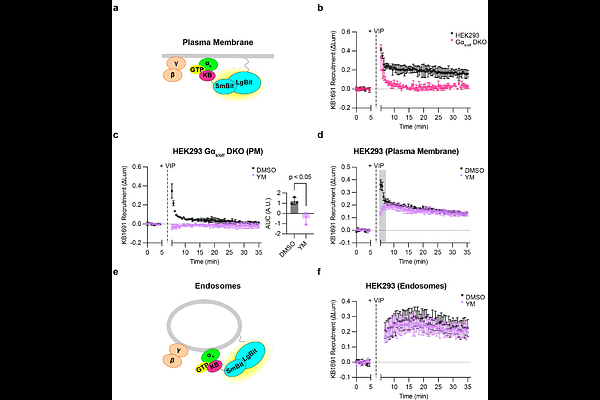Conformational biosensors delineate endosomal G protein regulation by GPCRs

Conformational biosensors delineate endosomal G protein regulation by GPCRs
Wysolmerski, B.; Blythe, E. E.; von Zastrow, M.
AbstractMany GPCRs trigger a second phase of G protein-coupled signaling from endosomes after initiating signaling from the plasma membrane. This inherently requires receptors to increase the concentration of active-state G proteins on the endosome membrane, but how this is achieved remains incompletely understood. We addressed this question by dissecting the regulation of G protein abundance and activity on endosomes following activation of several Gs-coupled GPCRs-the {beta}2-adrenergic receptor, the VIP-1 receptor, and the adenosine 2b receptor-that are natively co-expressed and differ in their ability to internalize after activation. We first verify GPCR-triggered redistribution of Gs from the plasma membrane to a mixed population of intracellular membranes, including endosomes, that is both reversible after receptor inactivation and triggered irrespective of the ability of the GPCR to internalize. We next show that GPCRs trigger this redistribution process at native expression levels and describe a method, using conformational biosensors, to detect endosomal activation of endogenous Gs. Applying this method, we show that GPCR-mediated production of active-state Gs on endosomes depends on receptor endocytosis, whereas increasing the net amount of Gs on endosomes does not. Our results support a model for Gs regulation on endosomes mediated by two spatially separated receptor coupling events-one at the plasma membrane controlling endosomal Gs abundance and another at endosomes controlling Gs activity. Additionally, our results reveal location-bias in the selectivity of G protein activation on endosomes that is differentially programmed by GPCRs in a receptor-specific manner.